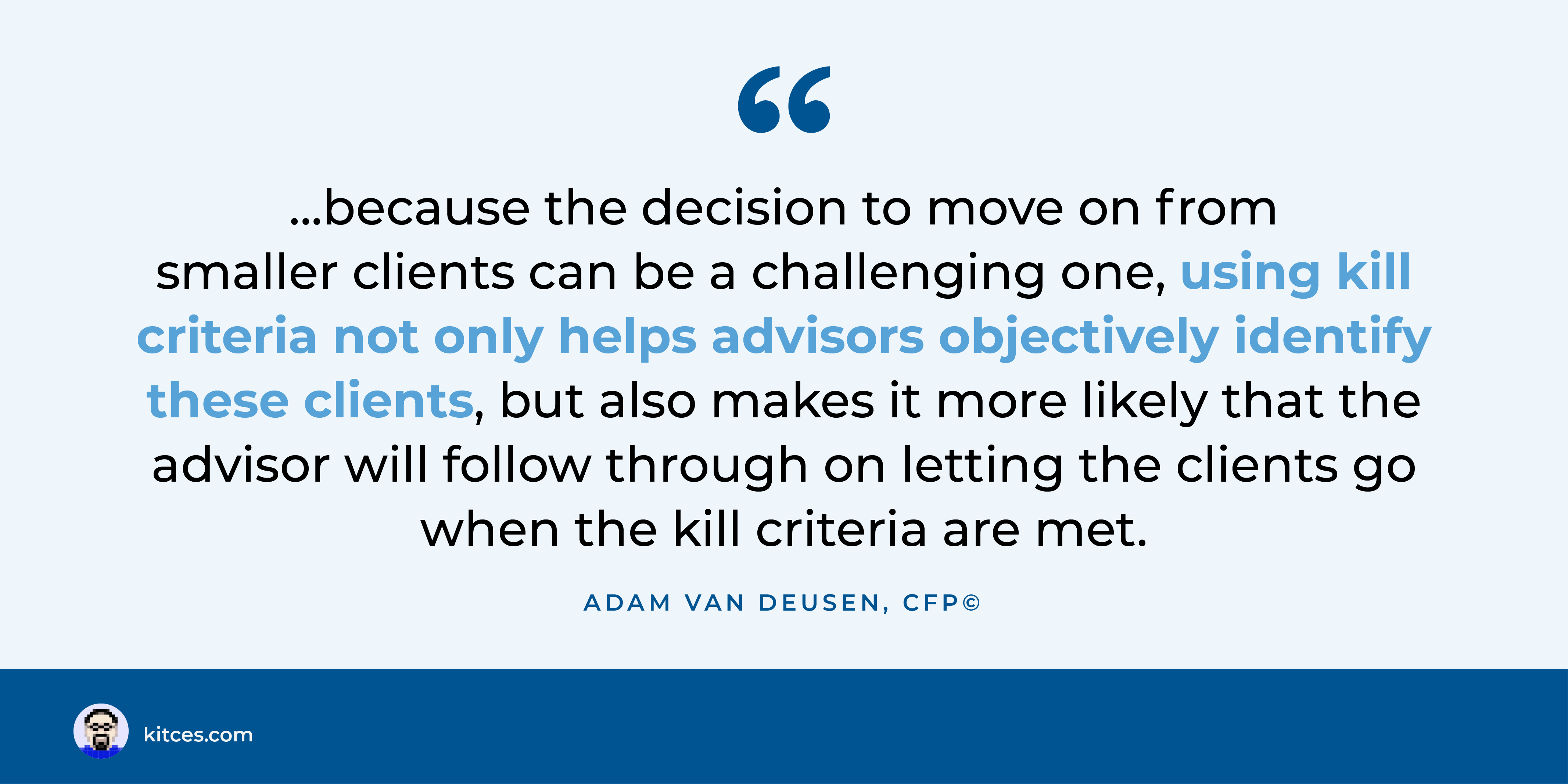When a financial advisor first opens their own firm, they often start with few (or no) clients and little revenue. And while they might have an ideal target client in mind, it can be tempting to bring on any client who can pay the advisor’s fee so that the advisor can simply ‘keep the lights on’. But as the firm grows, these initial clients might not generate as much revenue as the firm’s newer clients, perhaps because they were grandfathered into a lower annual fee schedule. While an advisor might be loyal to these clients (particularly those who came on board during their early days and have stuck with the advisor since then), without a “kill criteria”, continuing to serve them can sometimes create challenges for the firm’s bottom line.
However, deciding to move on from a less profitable client can be hard for advisors because they might not want to let down a client who has stayed with the firm for several years or with whom they have developed a personal relationship. Which means that without establishing objective criteria to determine when to let a client go or setting a date to do so, advisors can end up with ‘1-more-year’ syndrome, where they continue to serve these clients at the cost of their firm’s profitability or the available free time to enjoy for themselves, putting off the conversation of raising fees or of terminating the relationship for 1 more year.
In her book “Quit: The Power Of Knowing When To Walk Away”, professional poker player Annie Duke suggests a potential solution to this type of problem: implementing “kill criteria”, objective measures that can help someone decide when to quit an activity. For Duke, the best kill criteria have both a “state” (i.e., an objective, measurable condition) and a “date” (i.e., a specific time set to measure the state and take action). For instance, an advisor might set a certain date each year where they identify the clients whose annual fees are less than the average per-client overhead costs for the firm, or perhaps clients who generate well-below-average revenue but take a well-above-average number of hours to serve. And because actually following through on kill criteria can be challenging (e.g., letting a client go), it can help to have a ‘quitting coach’ to hold the individual accountable for their pre-commitment. For an advisor, such an individual could be an actual professional coach, or perhaps a mentor or trusted peer willing to hold the advisor accountable for the kill criteria they set.
When advisors identify clients that match the advisor’s kill criteria, they have several potential options to choose from to move on from the client, including referring the client to another advisor who might be a better fit, ‘graduating’ the client to handle their finances on their own, or, if many clients meet the criteria, engaging in a partial sale of the business. Advisors could also consider instituting (or increasing) minimum fees, which could give clients the option of continuing to work with the advisor for a higher fee.
Ultimately, the key point is that because moving on from smaller clients can be a challenging decision, using kill criteria not only can help advisors objectively identify these clients, but also can make it more likely that the advisor will follow through on letting the clients go when the kill criteria are met. Which can ultimately improve the financial health of a firm and, potentially, the advisor’s own wellbeing as well if they are able to work fewer hours serving more profitable clients!


